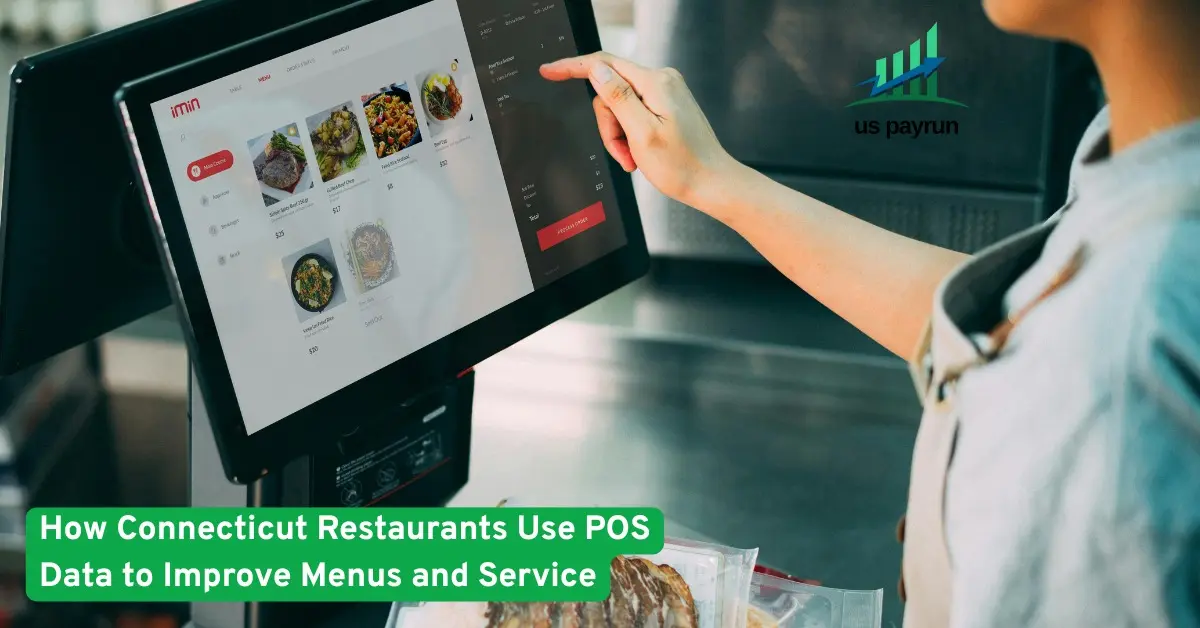
In today’s competitive restaurant industry, making informed decisions is the key to success. One of the most powerful tools that Connecticut restaurants can use to enhance their operations is POS data. By analyzing the data collected from Point of Sale systems, restaurants can optimize their menus, improve service, and ultimately boost their profitability. This guide explores how Connecticut restaurants use POS data to improve menus and service, demonstrating the incredible potential that data-driven decisions have for elevating the dining experience.
Studies show that 70% of restaurants using POS data to adjust menu offerings see an increase in customer satisfaction and operational efficiency. If you’re a Connecticut-based restaurant owner, this could be the game-changer you’ve been looking for.
Why POS Data Matters for Restaurants
Restaurant operations are complex, involving inventory management, staff scheduling, menu planning, and customer service. POS data offers a comprehensive view of how your restaurant is performing by tracking sales, customer preferences, and employee productivity. With the right analysis, restaurants can optimize nearly every aspect of their business.
POS systems capture valuable insights on customer behavior, sales trends, inventory usage, and more. In Connecticut’s highly competitive dining scene, leveraging this data is a necessity for staying ahead of the competition and offering an unforgettable dining experience.
How Connecticut Restaurants Use POS Data to Improve Menus
A well-designed menu can be the heart of a restaurant’s success, but creating one that resonates with customers requires constant refinement. POS data helps restaurant owners make informed decisions about what to keep, what to remove, and what to tweak.
1. Identifying Popular Dishes and Ingredients
By analyzing POS data, Connecticut restaurant owners can track which menu items are selling the most and which are not performing well. This data allows you to:
Spot customer favorites and promote them more prominently.
Identify underperforming items that may need to be reworked or removed.
Adjust portion sizes and pricing based on customer preferences and market trends.
2. Optimizing Menu Pricing
POS systems provide detailed reports on the cost of goods sold (COGS) and profit margins for each item. With this information, restaurant owners can:
Adjust menu pricing to ensure profitability without alienating customers.
Bundle dishes or offer upsell options that maximize the value of each transaction.
3. Tracking Seasonal Trends
Many Connecticut restaurants experience seasonal shifts in customer preferences, with certain ingredients becoming more popular at different times of the year. By using POS data to track these trends, you can:
Update your menu with seasonal specials that match customer desires.
Adjust your inventory to ensure you have the right ingredients on hand without overstocking.
4. Personalizing the Menu
POS data also allows restaurants to identify customer preferences, dietary restrictions, and purchasing behavior. By gathering this information, restaurants can offer:
Personalized recommendations.
Special deals or promotions based on customer behavior, such as loyalty programs or birthday offers.
Using POS Data to Improve Service
The quality of service in a restaurant directly impacts customer satisfaction and retention. POS data can streamline operations, allowing staff to provide faster and more efficient service, which ultimately enhances the overall dining experience.
1. Enhancing Staff Performance
POS systems track employee performance by providing data on:
How quickly servers process orders.
How often staff members interact with customers.
Average check sizes for different servers.
This information can be used to reward top performers, identify areas for improvement, and ensure that all staff are meeting the restaurant’s service standards.
2. Optimizing Staff Scheduling
With POS data on customer traffic patterns and peak hours, restaurant owners can optimize staff schedules to ensure:
Enough staff are on hand during busy times.
The right mix of skills (servers, cooks, dishwashers) is available for each shift.
Labor costs are controlled by scheduling more efficiently.
3. Improving Order Accuracy
POS systems help improve communication between front-of-house and kitchen staff, ensuring that orders are delivered accurately. By analyzing POS data, restaurant owners can:
Spot common order errors and train staff to prevent them.
Use POS alerts to ensure that special requests, such as dietary restrictions, are clearly communicated to the kitchen.
4. Streamlining Operations
POS systems track order times and can alert managers if there are delays in food preparation or service. By using this data, managers can:
Identify bottlenecks in the kitchen or service process.
Take immediate action to improve speed and efficiency.
Key Benefits of Using POS Data in Connecticut Restaurants
Improved Customer Satisfaction
With the insights provided by POS data, restaurants can personalize the dining experience, optimize menu offerings, and offer faster service—all of which contribute to happier customers and repeat business.
Increased Profitability
By refining menu offerings, pricing strategies, and operations based on POS data, restaurants can improve profit margins, reduce waste, and make smarter financial decisions.
Operational Efficiency
POS data enables restaurant owners to streamline operations, optimize staff scheduling, and improve order accuracy, all of which result in smoother day-to-day operations and lower overhead costs.
Frequently Asked Questions (FAQs)
How does POS data help me track my restaurant’s performance?
POS data provides real-time reports on sales, customer preferences, inventory levels, and staff productivity, helping you make informed decisions.
Can POS data help me optimize my menu?
Yes! By analyzing sales data and customer behavior, you can identify popular items, remove underperforming dishes, and adjust pricing to increase profitability.
How does POS data improve customer service?
POS data helps streamline order processing, track customer preferences, and improve staff performance, leading to faster, more accurate service.
Can I use POS data to create personalized offers?
Yes, POS systems track customer purchasing behavior, which allows you to create personalized offers or loyalty programs based on individual preferences.
How can POS data help with inventory management?
POS systems track inventory usage in real-time, allowing you to monitor stock levels and prevent overstocking or shortages.
What kind of reports can I get from POS data?
You can access a variety of reports, including sales trends, employee performance, inventory levels, and customer preferences, to make data-driven decisions.
Is POS data secure?
Yes, modern POS systems follow strict security protocols to ensure that your data is protected, including encryption and secure payment processing.
Take Action Now to Optimize Your Restaurant’s Operations
By using POS data to improve menus and service, Connecticut restaurant owners can enhance their operations, reduce waste, and increase customer satisfaction. It’s time to take full advantage of the powerful insights that your POS system provides.
Ready to Get Started?
At US Payrun, we specialize in providing POS solutions that help Connecticut restaurants streamline operations, enhance customer service, and drive profitability. Contact us today to learn how we can help your restaurant use POS data to its full potential!
